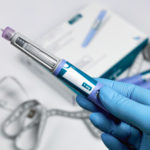
A multicenter study led by the Sant Pau Research Institute (IR Sant Pau) and the Hospital de Sant Pau, published in Neurology, demonstrates that the early and coordinated implementation of a comprehensive care protocol significantly improves functional recovery in patients with spontaneous intracerebral hemorrhage. This is one of the most severe forms of stroke.
The research confirms that rapid and standardized care is also decisive in hemorrhagic stroke, as it is in ischemic stroke, and shows that clinical measures applied in the first few hours can make a difference in the patient’s functional outcome. The results point to the need to organize specific care pathways for brain hemorrhage—a future “ICH Code” (for Intracerebral Hemorrhage)—that allow the immediate activation of medical resources and ensure the early application of interventions that save brain tissue and reduce long-term sequelae.
Stroke is one of the leading causes of death and disability. In Catalonia, more than 13,000 people suffer a stroke each year. The majority, about 85%, are ischemic strokes caused by the obstruction of a cerebral artery, but between 10 and 15% are hemorrhagic strokes, caused by the rupture of a blood vessel and the accumulation of blood inside the brain. This type of stroke usually has a poorer prognosis, with mortality rates that can exceed 40% and a high rate of severe disability. Until a few years ago, it was believed that there were few therapeutic options beyond general care, leading to a more passive approach to these patients.
A Simple but Effective Protocol That Improves Recovery
The new study led by Dr. Anna Ramos Pachón and Dr. Álvaro Lambea Gil, researchers with the Cerebrovascular Diseases Group at IR Sant Pau and neurologists in the Sant Pau Stroke Unit, confirms that this view must change. By analyzing more than 1,800 patients treated in the 28 public hospitals of Catalonia’s Xarxa d’Atenció d’Ictus between 2020 and 2022, the researchers found that the early application of a set of simple, protocolized medical measures—known as the care bundle protocol (CBP)—significantly improves functional recovery. This protocol includes the rapid control of blood pressure, blood glucose, body temperature, oxygenation, and the reversal of anticoagulant treatment when indicated.
The study confirms, in this population, the findings of the international clinical trial INTERACT3 and further shows that the beneficial effect persists for a longer period than previously described. It also demonstrates a benefit even among patients who arrive later at the hospital, although this effect is greater the sooner admission occurs.
The results show that patients in whom all protocol targets were achieved within the first 24 hours had a 66% greater probability of achieving a favorable functional recovery at three months. Particularly marked benefits were seen in those who arrived at the hospital within eight hours of symptom onset.
“For years it was assumed that little could be done in the case of brain hemorrhage beyond basic care. This study proves the opposite: that applying simple but well-coordinated measures early on greatly improves recovery prospects,” explains Dr. Álvaro Lambea-Gil. “The message is clear: time also matters in intracerebral hemorrhage, and we must act with the same speed and organization as in ischemic stroke.”
Toward an “ICH Code” to Improve Hemorrhagic Stroke Care
The study also shows that in only one out of four patients was full protocol compliance achieved, highlighting the need to improve adherence to these measures across the entire healthcare network. Even so, the results were consistent across all hospital types, demonstrating that these are low-cost, easily applicable interventions with major clinical impact.
“Until recently, the management of hemorrhagic stroke was more passive, partly due to the lack of specific treatments,” adds Dr. Lambea Gil. “Today we know there is much that can be done, and these measures should be applied systematically. That’s why we believe the time has come to implement an ICH Code in all hospitals—a dedicated pathway that ensures fast, protocolized care for patients with brain hemorrhage.”
The study also reinforces that the first hours are critical in brain hemorrhage and that the benefit of early action extends further than previously believed—up to approximately 14 hours after symptom onset. Therefore, the researchers insist that the public must continue going to the hospital immediately at any sign of stroke, since distinguishing between ischemic and hemorrhagic stroke is only possible through imaging tests.
“The message to citizens does not change: if stroke symptoms appear, call 112 immediately. Even if the scan later shows a hemorrhage, there are still things we can do that can make a difference,” summarizes Dr. Lambea Gil.
The HIC-CAT Registry: A Pioneering Population-Based Research Tool
The study was carried out using the HIC-CAT (Hemorràgia Intracerebral a Catalunya) registry, a project funded by the Fundació Ictus and promoted by Dr. Joan Martí Fàbregas from Hospital de Sant Pau, in coordination with the Pla Director de Malalties Vasculars Cerebrals of the Catalan Ministry of Health.
HIC-CAT was created with the goal of improving real-world knowledge of hemorrhagic-stroke care in Catalonia, an area for which there had previously been very little systematized population-based data. Its design made it possible to collect clinical, imaging, therapeutic, and outcome variables for each case and link them to care and short- and medium-term outcome indicators for all patients diagnosed with acute intracerebral hemorrhage in Catalan public hospitals capable of treating stroke.
Coordinated by IR Sant Pau and Hospital de Sant Pau, the registry involves the 28 public hospitals in Catalonia that constitute the Xarxa d’Atenció a l’Ictus, making it one of the largest prospective hemorrhagic-stroke registries in Europe. Thanks to this infrastructure, it has been possible to analyze for the first time how the systematic application of early-management measures can modify functional outcomes under real-world clinical conditions, beyond the controlled setting of clinical trials.
In addition, HIC-CAT serves as a collaborative research platform, facilitating the development of observational studies, quality-improvement projects, and future clinical interventions aimed at standardizing hemorrhagic-stroke care. Its modular structure and centralized coordination allow the inclusion of new variables or centers, and its integration with the Stroke Catalan Reperfusion Consortium ensures consistency with existing stroke-code programs.
“HIC-CAT represents a qualitative leap in how intracerebral hemorrhage is studied,” says Dr. Pol Camps, coordinator of the Cerebrovascular Diseases Group at IR Sant Pau and the Sant Pau Stroke Unit, and co-author of the study. “It allows us not only to describe what we do but also to identify which practices have a real impact on patient recovery and how we can implement them consistently throughout the healthcare system.”
IR Sant Pau’s Leadership in Stroke Research
The study on intracerebral hemorrhage is part of a consolidated line of research at IR Sant Pau that combines clinical practice, systematic data collection, and population-based analysis to improve the care and recovery of patients with all types of stroke. This line of work seeks to translate the knowledge generated from Catalonia’s stroke registries into clinical practice, with a multidisciplinary approach that integrates neurologists, radiologists, intensivists, and specialized nursing staff.
Recently, the Cerebrovascular Diseases Group, led by Dr. Pol Camps, has published in Neurology two internationally recognized studies that reinforce this commitment to useful, applicable research.
On one hand, a study led by Dr. Marina Guasch-Jiménez demonstrated that asymptomatic hemorrhagic transformations after endovascular treatment for ischemic stroke are also associated with poorer functional recovery and higher mortality, which calls for reconsidering the safety and follow-up criteria of endovascular therapy. The study, based on more than 3,000 cases from the Catalan Stroke Code registry (CICAT), is the largest population-based analysis conducted to date on this phenomenon.
On the other hand, research led by Dr. Garbiñe Ezcurra-Díaz confirmed that urgent carotid stent placement during mechanical thrombectomy improves functional outcomes and survival in patients with ischemic stroke caused by tandem lesions, without increasing hemorrhagic complications. This study, which included 578 patients treated in ten Catalan centers, provides some of the strongest evidence to date on the safety and efficacy of urgent carotid stenting.
“These studies reflect IR Sant Pau’s commitment to generating clinically useful evidence for real-world practice, leveraging the strength of Catalonia’s population-based stroke registries,” emphasizes Dr. Pol Camps. “Our goal is to continue advancing stroke care through collaborative, patient-centered research.”
Article References:
- Lambea-Gil Á, Marti-Fabregas J, Cardona P, Rodriguez-Luna D, Millán M, Amaro S, Prats-Sanchez L, Silva Y, Seró L, Rodriguez-Campello A, Cánovas D, Martinez-Domeño A, Guasch-Jiménez M, Ezcurra-Díaz G, Carcel-Marquez J, Fernandez-Cadenas I, Pérez De La Ossa N, Abilleira S, Salvat-Plana M, Fagundez O, Camps-Renom P, Ramos-Pachón A, as the HIC-CAT investigators. Effect of onset-to-admission time and care bundle achievement on functional outcomes in patients with ICH: A population-based study. Neurology 2025;105:e214176. https://doi.org/10.1212/WNL.0000000000214176
- Marti-Fabregas J, Ramos-Pachón A, Prats-Sanchez L, Núñez-Guillén A, Rodríguez BL, Rodriguez-Luna D, Amaro S, Silva Y, Rodriguez-Campello A, Puig I, Gomez-Choco M, Vázquez-Justes D, Guanyabens N, Cocho D, Cánovas D, Steinhauer EG, Llull L, Guasch-Jiménez M, Martinez-Domeño A, Marin R, Lambea-Gil Á, Díaz GE, Paipa-Merchan A, Quesada H, Casadevall MP, Wenger D, Pancorbo O, Seró L, Pérez J, Costa X, Zaragoza J, Rodríguez-Villatoro N, Catena E, Calvo NM, Krupinski J, De La Ossa NP, Abilleira S, Salvat-Planas M, Fagundez O, Camps-Renom P, for HIC-CAT. Influence of hospital type on outcomes of patients with acute spontaneous intracerebral hemorrhage: A population-based study. Neurology 2024;103:e209539. https://doi.org/10.1212/WNL.0000000000209539
- Guasch-Jiménez M, Ezcurra-Díaz G, Lambea-Gil Á, Ramos-Pachón A, Martinez-Domeño A, Prats-Sanchez L, Fernández-Vidal JM, Toscano-Prat C, Marti-Fabregas J, Martínez-González JP, Fernandez-Cadenas I, Cardona P, Rodriguez-Villatoro N, Rodríguez Vázquez A, Gomis M, Xuclà-Ferrarons T, Rodriguez-Campello A, Cánovas D, Seró L, Purroy F, Salvat-Plana M, Abilleira S, Camps-Renom P, as the Catalan Stroke Code and Reperfusion Consortium (CICAT). Influence of asymptomatic hemorrhagic transformation after endovascular treatment on stroke outcome: A population-based study. Neurology 2025;104:e213509. https://doi.org/10.1212/WNL.0000000000213509.
- Ezcurra-Díaz G, Cardona P, Rodriguez-Villatoro N, Doncel-Moriano Cubero A, Flores-Pina B, Figueras-Aguirre GL, Fernández-Pérez I, Xuclà-Ferrarons T, Purroy F, Flores A, Guasch-Jiménez M, Lambea-Gil Á, Prats-Sanchez L, Ramos-Pachón A, Martinez-Domeño A, Marti-Fabregas J, Fernández-Vidal JM, Abilleira S, Salvat-Plana M, Núñez-Guillén A, Lara-Rodríguez B, Rodriguez-Luna D, Hernandez D, Rodríguez Vázquez A, Cabero-Arnold A, Menéndez Albarracín A, Cánovas D, Camps-Renom P. Emergent carotid artery stenting in patients with acute ischemic stroke with tandem lesions: One-year follow-up results from the SECURIS study. Neurology 2025;105:e214067. https://doi.org/10.1212/WNL.0000000000214067.





















